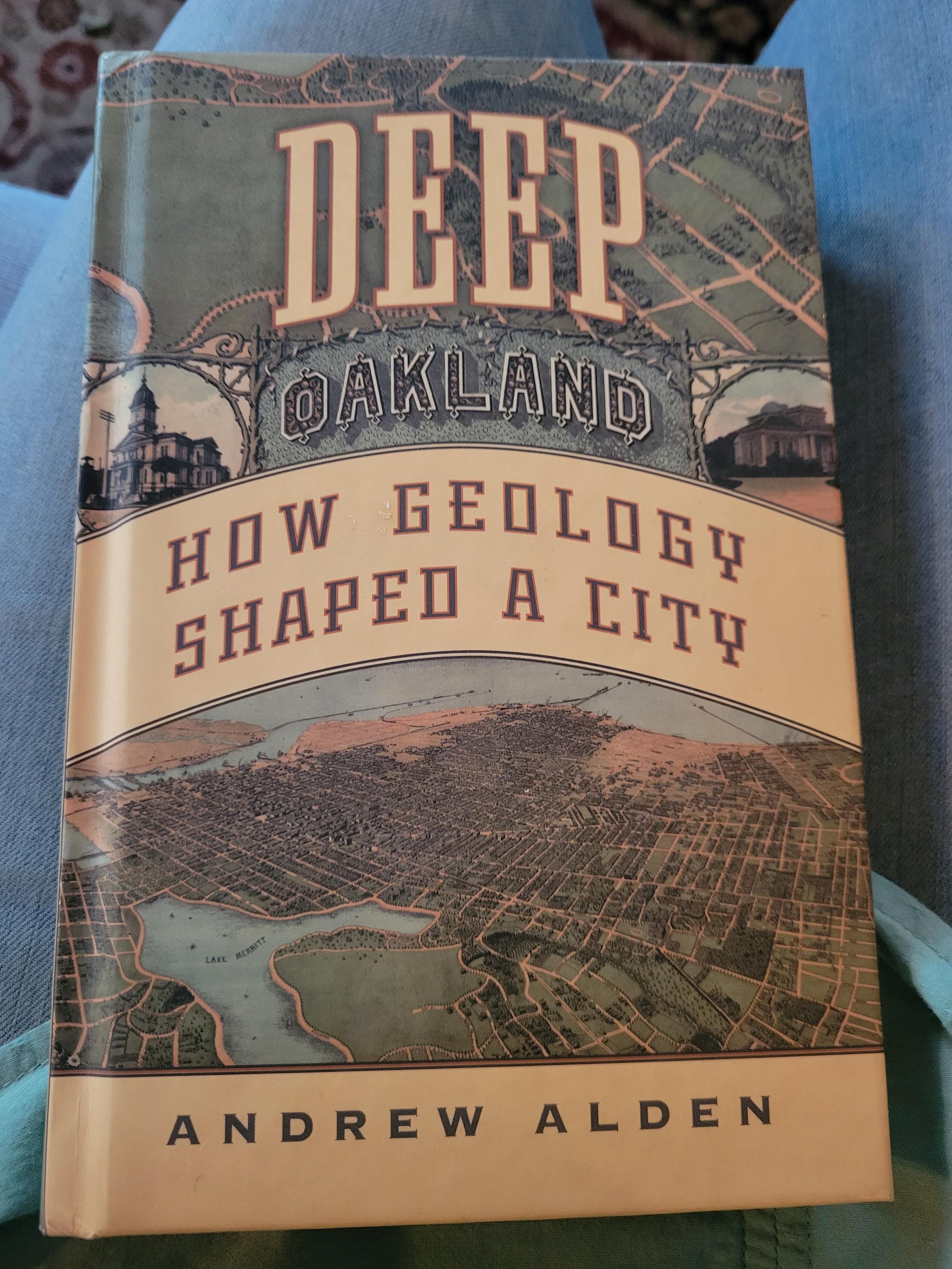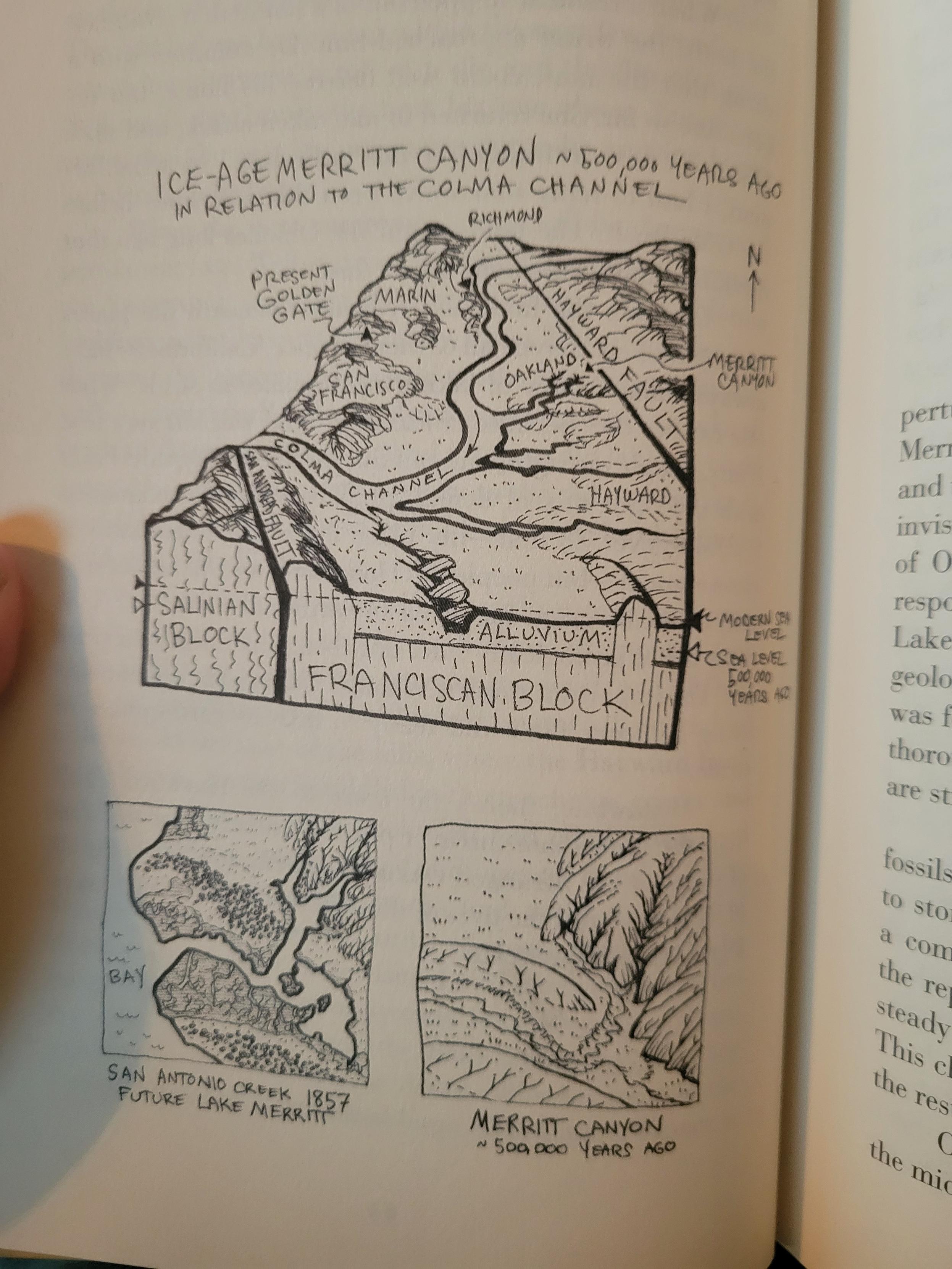Just got an new ant guide "Ants of Britain and Europe"
-
Just got an new ant guide "Ants of Britain and Europe"
...
...
did ya'll brexit the ANTS too???
@futurebird I've noticed most "birds/mammals/trees of North America" type books often leave out Mexico and Greenland, which doesn't make any biogeographical sense at all.
-
@sewblue @michael_w_busch @futurebird @catmisgivings The volume in the same series on the geology of the San Francisco Bay Area is also really good: https://www.ucpress.edu/books/geology-of-the-san-francisco-bay-region/paper
@jmccyoung @michael_w_busch @futurebird @catmisgivings have your read this one? It was hard to get a copy for a while.
(I am not exactly sure how geology books have multiplied like mushrooms on my bookshelves)


-
Nonetheless a top notch field guide with lots of photos, helpful tips on how to tell the ants apart.
Yes. I read field guides sometimes. What are you going to do about it? It's like a catalog of interesting ants I might meet someday if I ever travel over there.
@futurebird Do you have a recommendation for ants of the mid-Atlantic?
-
It's one of those things that you kind of assume exists. Of course I can find a book on "The Ants of Major Country/Region" but ... no maybe you can't. At least not one that isn't from 1919 with no photos.
"The Ants of Borneo" Is full of tempting leads, but it's so old many of the names have changed and some of the ants only have one or two words about them.
Granted there are about 16,000 species of ants. STILL.
@futurebird
The old "Vampire: the Masquerade" role-playing game used to have setting supplements that were called like "New York by Night" or "Los Angeles by Night".I'm just imagining an myrmecological equivalent series, all titled something like "Delmarva by Pheromone Trail".
-
I want to say a little bit about insect field guides and languages. Although, I think this applies for any kind of field guide for plants, rocks, birds anything...
It's very hard to find good field guides in multiple languages, even in a spamy language like English or French. Guides tend to be localized.
There are whole shelves of ant books that haven't been translated and I can't read them and it drives me nuts.
I mean it makes sense, but I want all of them.

Ecological Illustrated of Common Ant Species from China [Chinese]
Buy Ecological Illustrated of Common Ant Species from China [Chinese] (9787534996979): NHBS - Zhou Shanyi, Henan Science and Technology Publishing House
(www.nhbs.com)
@futurebird I have lots of red ant colonies on my allotment and they are enjoying stinging me this year, was reading this paper about their venom and wow there was me thinking it was a simple toxin

Venomics of the Central European Myrmicine Ants Myrmica rubra and Myrmica ruginodis
Animal venoms are a rich source of novel biomolecules with potential applications in medicine and agriculture. Ants are one of the most species-rich lineages of venomous animals. However, only a fraction of their biodiversity has been studied so far. Here, we investigated the venom components of two myrmicine (subfamily Myrmicinae) ants: Myrmica rubra and Myrmica ruginodis. We applied a venomics workflow based on proteotranscriptomics and found that the venoms of both species are composed of several protein classes, including venom serine proteases, cysteine-rich secretory protein, antigen 5 and pathogenesis-related 1 (CAP) superfamily proteins, Kunitz-type serine protease inhibitors and venom acid phosphatases. Several of these protein classes are known venom allergens, and for the first time we detected phospholipase A1 in the venom of M. ruginodis. We also identified two novel epidermal growth factor (EGF) family toxins in the M. ruginodis venom proteome and an array of additional EGF-like toxins in the venom gland transcriptomes of both species. These are similar to known toxins from the related myrmicine ant, Manica rubida, and the myrmecine (subfamily Myrmeciinae) Australian red bulldog ant Myrmecia gullosa, and are possibly deployed as weapons in defensive scenarios or to subdue prey. Our work suggests that M.rubra and M. ruginodis venoms contain many enzymes and other high-molecular-weight proteins that cause cell damage. Nevertheless, the presence of EGF-like toxins suggests that myrmicine ants have also recruited smaller peptide components into their venom arsenal. Although little is known about the bioactivity and function of EGF-like toxins, their presence in myrmicine and myrmecine ants suggests they play a key role in the venom systems of the superfamily Formicoidea. Our work adds to the emerging picture of ant venoms as a source of novel bioactive molecules and highlights the need to incorporate such taxa in future venom bioprospecting programs.

MDPI (www.mdpi.com)
-
@futurebird Do you have a recommendation for ants of the mid-Atlantic?
Do you mean like ... Ants in Barbados and Iceland??
-
Do you mean like ... Ants in Barbados and Iceland??
@futurebird Hee hee, nope, mid-Atlantic US. Sorry, I'm a novice.
-
@futurebird Hee hee, nope, mid-Atlantic US. Sorry, I'm a novice.
What state? There are a lot of ecologies in that region and I haven't seen a book that looks as a whole.
-
What state? There are a lot of ecologies in that region and I haven't seen a book that looks as a whole.
@futurebird Personally I’m interested in the Northern Virginia coastal plain, but it interlaces a bit with piedmont. It’s messy.
-
@futurebird Personally I’m interested in the Northern Virginia coastal plain, but it interlaces a bit with piedmont. It’s messy.
There are two books:
the ants of New England
This is the best field guide on US and Canada ants, although it's about "new England" many of your local ants will be in this book."Ants of North America" is a more general guide, not as much detail, but still high quality.